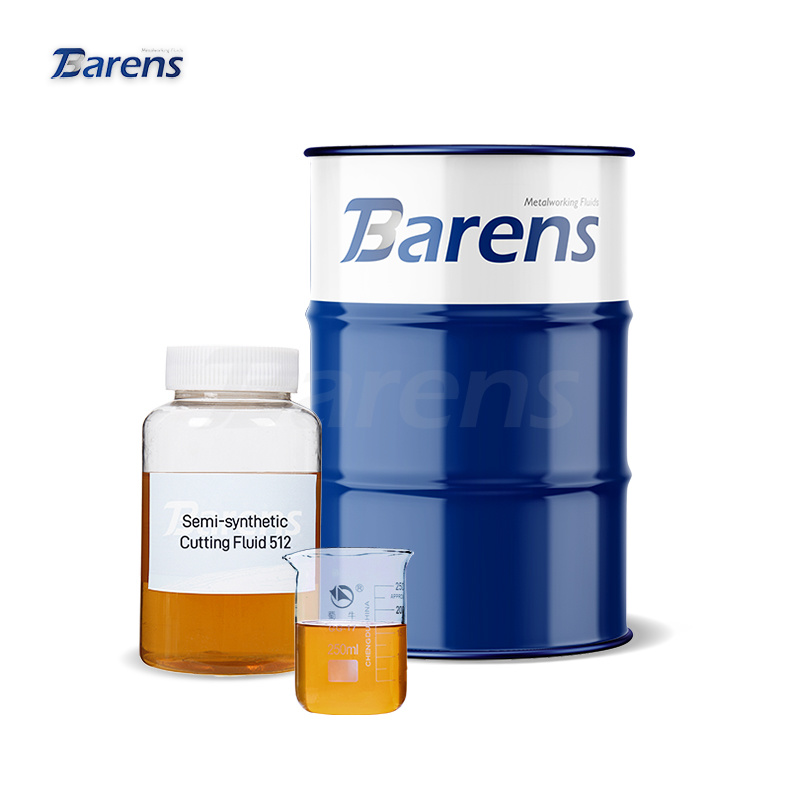Exploring the Benefits of Using Coolant in Aluminium Machining
Sep 09,2025

Exploring the Benefits of Using Coolant in Aluminium Machining
Table of Contents
- 1. Introduction to Aluminium Machining
- 2. The Importance of Coolants in Machining
- 3. Types of Coolants Used in Aluminium Machining
- 4. Benefits of Using Coolant in Aluminium Machining
- 4.1 Improved Tool Life
- 4.2 Enhanced Surface Finish
- 4.3 Increased Machining Efficiency
- 4.4 Heat Dissipation
- 4.5 Removal of Metal Swarf
- 5. Best Practices for Using Coolant in Aluminium Machining
- 6. Frequently Asked Questions (FAQs)
- 7. Conclusion
1. Introduction to Aluminium Machining
Aluminium machining is a critical process in various industrial applications, from automotive manufacturing to aerospace engineering. The unique properties of aluminium, such as its lightweight nature and excellent corrosion resistance, make it a preferred material in many sectors. However, machining aluminium can present specific challenges, including material sticking to tools and high heat generation during cutting operations. One effective way to overcome these challenges is through the use of coolants.
2. The Importance of Coolants in Machining
Coolants play a pivotal role in the machining process. They are designed to reduce friction and wear, dissipate heat, and improve the overall efficiency of machining operations. In aluminium machining, the right coolant can lead to improved tool performance, extended tool life, and superior surface finishes. Understanding the importance of coolants helps us appreciate their numerous benefits.
3. Types of Coolants Used in Aluminium Machining
Several types of coolants are commonly used in aluminium machining. Each type comes with its unique properties and advantages.
3.1 Water-Soluble Coolants
Water-soluble coolants, also known as emulsifiable oils, are popular in aluminium machining due to their excellent cooling properties. These coolants mix with water to form a milky emulsion, providing effective lubrication and heat dissipation. They are cost-effective and environmentally friendly, making them a preferred choice for many manufacturers.
3.2 Synthetic Coolants
Synthetic coolants offer enhanced cooling and lubrication properties without using mineral oils. They are formulated from chemical compounds and are often biodegradable. Synthetic coolants are ideal for high-performance machining applications, as they provide superior cooling and reduce foaming, which can be beneficial during high-speed operations.
3.3 Neat Oils
Neat oils, or straight oils, are non-emulsifiable lubricants that provide excellent lubrication properties. They are used in operations requiring high lubrication and low cooling, such as grinding and turning. Neat oils are particularly effective in reducing tool wear and achieving fine surface finishes.
4. Benefits of Using Coolant in Aluminium Machining
Utilizing coolant during aluminium machining offers several substantial benefits that can significantly impact production efficiency and product quality.
4.1 Improved Tool Life
One of the primary advantages of using coolant is the improvement in tool life. By reducing friction and heat build-up, coolants help to keep cutting tools at optimal temperatures, preventing premature wear. This leads to longer tool life and reduced downtime for tool changes, ultimately increasing productivity.
4.2 Enhanced Surface Finish
The use of coolant contributes to achieving a superior surface finish on machined components. The lubrication provided by the coolant reduces friction between the tool and the workpiece, resulting in smoother cuts. This not only enhances the cosmetic appearance of the finished product but also improves its functional properties.
4.3 Increased Machining Efficiency
Machining with coolant enhances overall efficiency. The cooling properties of the coolant allow for higher cutting speeds and feeds, which can reduce cycle time significantly. Furthermore, maintaining consistent tool performance reduces the need for frequent adjustments, allowing for a smoother and more efficient operation.
4.4 Heat Dissipation
Heat generation is a critical concern in machining processes, particularly with materials like aluminium. Coolants effectively dissipate heat generated during cutting, lowering the temperature of the tool and workpiece. This not only prevents thermal deformation but also reduces the risk of damage to both the tool and the workpiece.
4.5 Removal of Metal Swarf
Another essential benefit of using coolant is its ability to assist in the removal of metal swarf. The flow of coolant helps to wash away chips and debris generated during machining. This improves visibility and access to the cutting area, reduces the risk of tool blockage, and enhances safety for operators.
5. Best Practices for Using Coolant in Aluminium Machining
Maximizing the effectiveness of coolant in aluminium machining requires adherence to best practices, ensuring optimal performance and cost-efficiency.
5.1 Coolant Application Techniques
The method of coolant application can significantly affect its performance. Options include flood cooling, mist cooling, and through-tool applications. Flood cooling is the most common method, providing ample coverage of the cutting area. Mist cooling, meanwhile, is beneficial for reducing coolant usage while still offering effective lubrication. Through-tool applications deliver coolant directly to the cutting edge, maximizing its cooling and lubrication effects.
5.2 Maintaining Coolant Quality
Regular maintenance of coolant quality is crucial for performance. This includes monitoring pH levels, concentration, and microbial contamination. Keeping the coolant clean and properly mixed ensures it retains its lubricating and cooling properties. Additionally, regular filtration can help eliminate metal chips and other contaminants that can degrade coolant effectiveness.
6. Frequently Asked Questions (FAQs)
1. What are the signs that coolant needs to be changed?
Signs include a foul odor, discoloration, changes in viscosity, or the presence of excessive foam. Additionally, if the coolant fails to effectively cool or lubricate, it may need to be replaced.
2. Can I use water alone as a coolant?
While water can provide some cooling benefits, it lacks the lubrication properties necessary for effective machining. It is recommended to use a proper coolant designed for machining.
3. How often should the coolant be filtered?
Coolant should be filtered regularly, ideally daily, or as dictated by the volume of machining. This helps maintain coolant quality and ensures optimal performance.
4. Are synthetic coolants better than oil-based coolants?
Synthetic coolants generally offer improved cooling and reduced environmental impact. However, the best choice depends on specific machining conditions and requirements.
5. How can I reduce coolant costs without sacrificing performance?
Implementing efficient coolant application techniques, maintaining coolant quality, and using coolant recycling systems can help reduce costs while maintaining performance levels.
7. Conclusion
In conclusion, the use of coolant in aluminium machining is not just a best practice; it is a vital component that directly influences production efficiency, tool longevity, and product quality. By understanding the various types of coolants available, their specific benefits, and best practices for application and maintenance, manufacturers can significantly enhance their machining operations. Investing in the right coolant strategy can lead to substantial cost savings and improved outcomes in the competitive industrial landscape. Embrace the benefits of coolant in aluminium machining to achieve excellence in your manufacturing processes.
Contact Us
E-mail:
Weihao@barens.cn
Mobile/Wechat/Whatsapp:
+(86)18595692582
Address:
No.9, Industrial Zone, Wangqu Village, Qinyang City, Jiaozuo City, Henan Province, China
TEL: +86 037186158618
Fax number: +86371-86158608
Contacts: Davi
Mobile/Wechat/Whatsapp: (+86)18595692582
Email: weihao@barens.cn
Contacts: Doris
Mobile/Wechat/Whatsapp: (+86)18211801290
E-mail: Doris@barens.cn
Address:No.9, Industrial Zone, Wangqu Village, Qinyang City, Jiaozuo City, Henan Province, China
Website construction: 300.cn | SEO | Digital card
This site supports IPV4/IPV6 access
COOKIES
Our website uses cookies and similar technologies to personalize the advertising shown to you and to help you get the best experience on our website. For more information, see our Privacy & Cookie Policy
COOKIES
Our website uses cookies and similar technologies to personalize the advertising shown to you and to help you get the best experience on our website. For more information, see our Privacy & Cookie Policy
These cookies are necessary for basic functions such as payment. Standard cookies cannot be turned off and do not store any of your information.
These cookies collect information, such as how many people are using our site or which pages are popular, to help us improve the customer experience. Turning these cookies off will mean we can't collect information to improve your experience.
These cookies enable the website to provide enhanced functionality and personalization. They may be set by us or by third-party providers whose services we have added to our pages. If you do not allow these cookies, some or all of these services may not function properly.
These cookies help us understand what you are interested in so that we can show you relevant advertising on other websites. Turning these cookies off will mean we are unable to show you any personalized advertising.
SAF Coolest v1.3.1.2 设置面板 GAGSD-AGYF-JAAAE-ADE
无数据提示
Sorry, the current column is being updated, please look forward to it!
You can view other columns or returnHome Page



